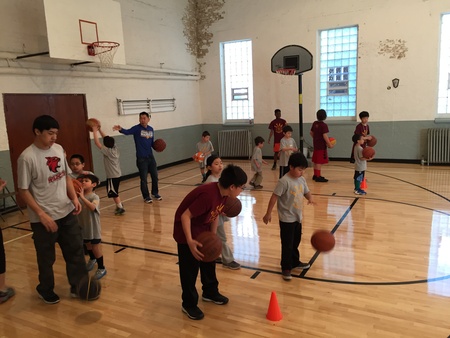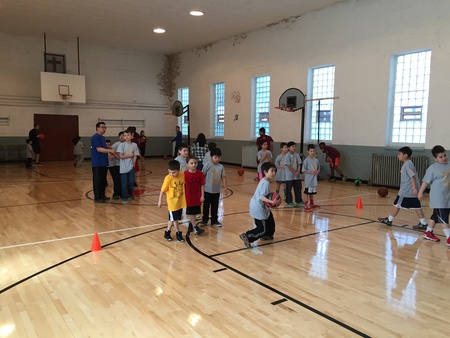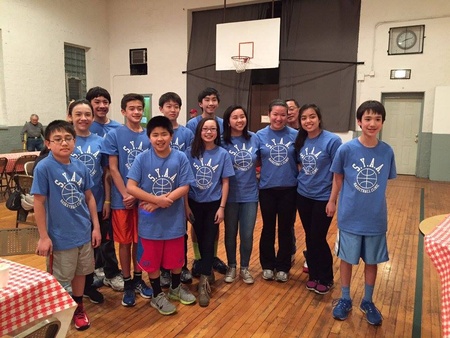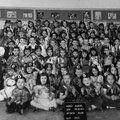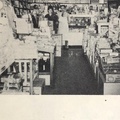Prior to WWII, there were roughly four hundred persons of Japanese ancestry living in Chicago. By 1945, there were twenty thousand, the majority of whom were ex-West Coast Japanese Americans resettled from various WWII U.S. War Relocation Authority concentration camps.
Many were Nisei (American-born children of Japanese immigrants) in their teens and early twenties with a lot of steam to burn, and so in 1946 the Chicago Nisei Athletic Association (CNAA) was formed as a competitive and social outlet with teams competing in sports such as basketball, baseball, softball, bowling, and golf, among others. At its peak, CNAA counted 1,200 participants.
As the Nisei married and had children, they began bringing their own kids up in CNAA.
“There was a lot going on in the Japanese community for Sansei (children of the Nisei) kids during the 1960s and ’70s,” relates Ty Momii, a South Side native. “I was fortunate to play CNAA sports along with participating in the Buddhist Temple of Chicago Boy Scout Troop and Nisei Ambassadors Drum and Bugle Corps.
“See, but the Sansei started getting married and having kids at a later age than the Nisei, and they spread out to different areas and so there was this gap. There weren’t enough players to sustain the leagues anymore, and eventually the well went dry.”
Given the generational and geographic gap, and that there was no centralized “J-town” as a common gathering place, the Chicago Japanese American community fragmented among churches, temples, and political & social service agencies targeted toward the elders. As a result, unless they were related or attended the same church, many Yonsei (children of the Sansei) youth grew up isolated from each other.
In 1990, a small group of Sansei ex-CNAA players decided to get together to form a basketball clinic for their kids, to socialize them among other Japanese American youth. It would run Saturdays for eight weeks from February through March, two of the ugliest shut-in months in Chicago and a great way to get kids up and going on a Saturday afternoon. Twenty kids signed up the inaugural year.
They called themselves the Sansei Yonsei Athletic Association (SYAA), and incorporated as an Illinois Non-Profit Organization with Momii as its Executive Director, a role he holds to this day. The first clinic was held at Berry United Methodist Church in the Lincoln Square neighborhood, where Momii had once coached the Buddhist Temple of Chicago’s girls basketball team. Shortly thereafter, the clinic moved to the basketball gym of Ravenswood Fellowship United Methodist Church, a Japanese American congregation in the Uptown neighborhood, where it continues today.
The clinic, which enrolled seventy-five youth in 2016, has been free since its inception and as of 2017 has partnered with the Japanese American Service Committee, a social service agency founded in 1946 to aid Nikkei resettlers in Chicago. Sponsor donations, largely from the Japanese American business community, pay for basketballs, portable hoops, refreshments, gym rental fees, a free t-shirt for each participant, and an end-of-clinic pizza party. The coaches, most of whom are past clinic participants, volunteer their time.
The clinic is broken into two sessions. The earlier, from 12:30 p.m.–2:15 p.m., focuses on fundamentals and teamwork for young children, while the 2:30 p.m.–4:15 p.m. session is for the older, more advanced kids. Most of the advanced players show up for the earlier session to coach and serve as role models to the beginners.
“Our goal here is to turn these kids into people who are going to care about, and feel responsible for, other people,” says Momii. “We’re building a community of productive citizens. Outside of clinic, our kids also volunteer for various community events on behalf of SYAA. So this clinic isn’t about churning out basketball players. A lot of these kids don’t even come in with a basketball background.”
Many junior high and high school students whose schools require outside community volunteer hours as part of their passing requirements serve their time with SYAA.
“It’s a fun, but also important way to fulfill community service hours,” says one of the youth coaches. “I mean I get to play basketball, but also teach little kids and show them how to work together.”
Momii supports this sentiment. “I really don’t care if these kids leave clinic any better at basketball than they came in. The most important part is they care about each other and learn to work together.”
© 2017 Erik Matsunaga


